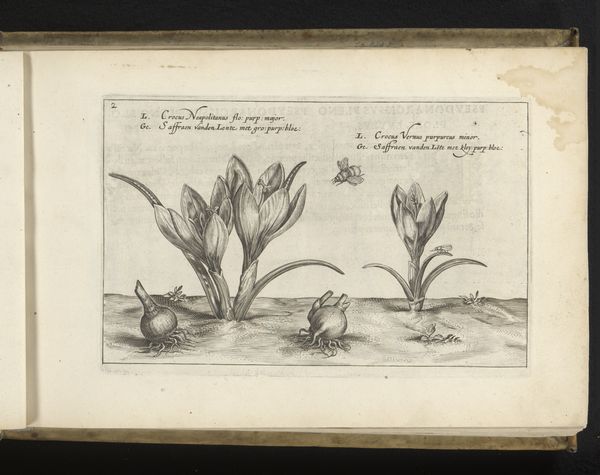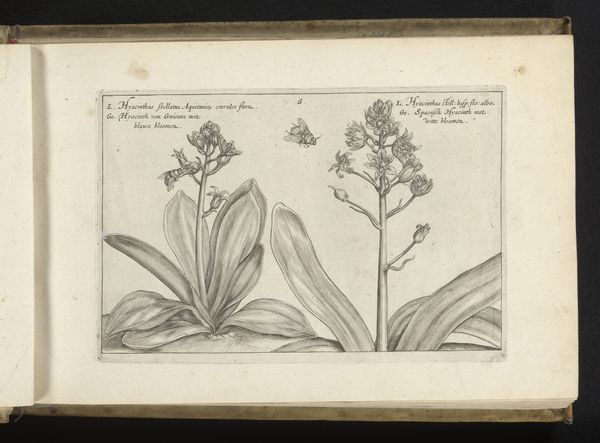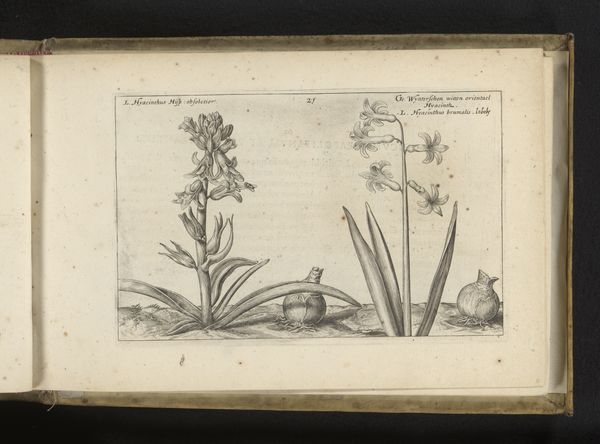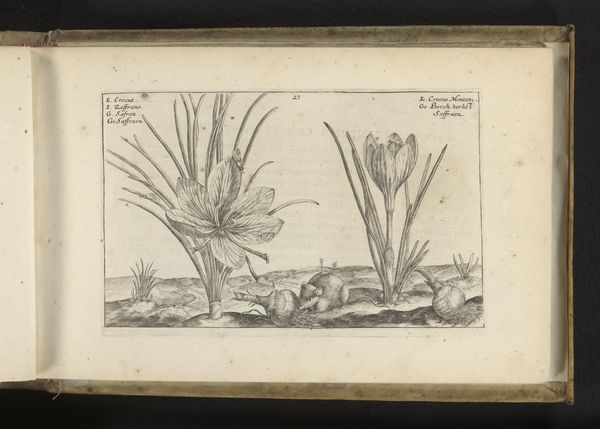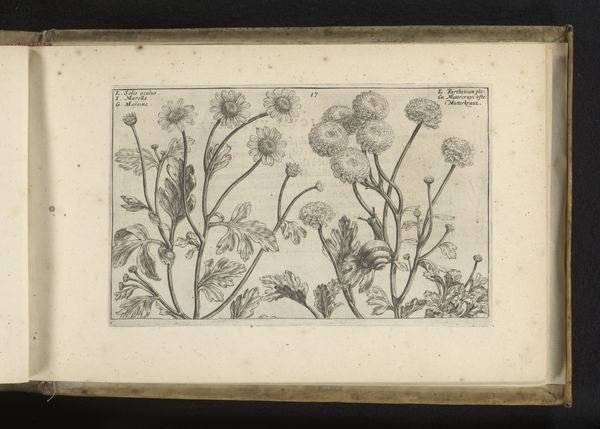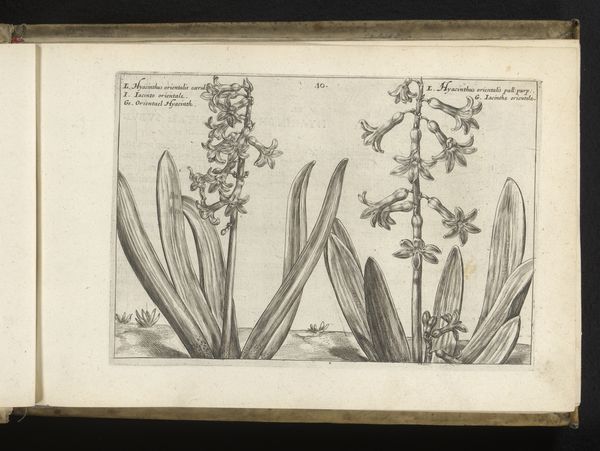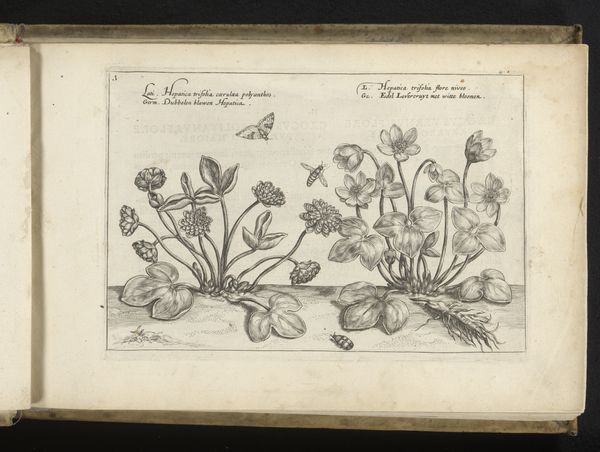
drawing, print, paper, engraving
#
drawing
# print
#
paper
#
11_renaissance
#
northern-renaissance
#
engraving
Dimensions: height 148 mm, width 219 mm
Copyright: Rijks Museum: Open Domain
Curator: Here we have “Twee soorten druifhyacinten,” or "Two Kinds of Grape Hyacinths," an engraving made in 1617 by Crispijn van de Passe the Younger. Editor: It’s charming! The stark black and white emphasizes the forms; I immediately notice the bulb rendered with an almost scientific precision. The lines create textures, from the smooth bulbs to the tiny blossoms and leaves. Curator: It’s fascinating how a relatively simple image like this was part of the burgeoning culture of scientific documentation. Botanical illustrations weren't just about aesthetics, but about cataloging and understanding the natural world in a period of intense global exchange. These kinds of images often circulated among a scholarly elite. Editor: I'm intrigued by the symbolic positioning, as if we have a binary of white versus color indicated in Latin and Dutch. One side seems fertile, productive, grounded—there’s the bulb, almost overflowing. The other feels sparser. The difference in implied hue suggests cultural classifications even in the botanical world. Curator: Absolutely. And it highlights the intersections of knowledge production, trade, and even early forms of ecological awareness. The very act of classifying these plants reinforces existing societal hierarchies. In this sense, what does it mean to 'know' a flower in the 17th century? Who benefits from that knowledge? Editor: But from a purely formal standpoint, there's a delicate dance of line and form here. It exemplifies Northern Renaissance aesthetics—the detail, the observation. The contrast heightens the botanical details—a balance of observation and symbolism. Curator: This artwork, housed here at the Rijksmuseum, continues to ask relevant questions. We might consider how power operates through such representations, informing our modern understanding of both nature and society. Editor: Indeed. It has prompted a look at classification through both visuality and historical analysis. Thank you for your time.
Comments
No comments
Be the first to comment and join the conversation on the ultimate creative platform.


